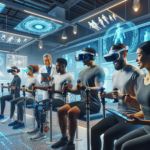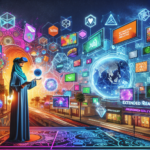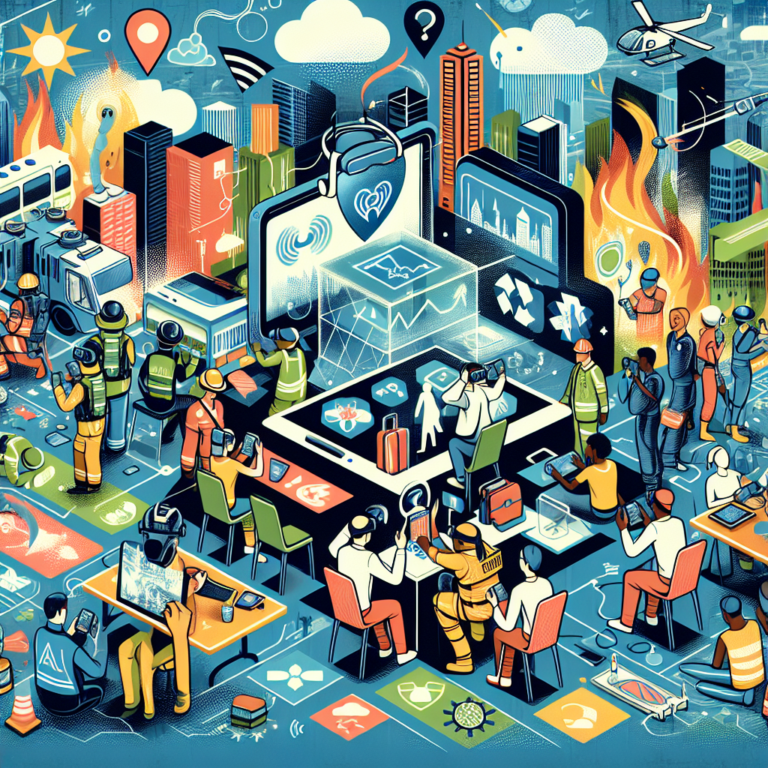The Empowering Impact of Immersive Technologies on Disaster Preparedness
Introduction: A New Dawn in Disaster Readiness 🌅
In a world where disasters can strike without warning, preparing communities to face such challenges is more critical than ever. Traditional methods of disaster preparedness have evolved, paving the way for cutting-edge solutions that harness the power of immersive technologies. From virtual reality (VR) to augmented reality (AR), these innovative tools are revolutionizing how we train, respond, and recover during catastrophic events. In this post, we will delve into the multifaceted role of immersive technologies in enhancing disaster preparedness and explore how they can empower communities to be more resilient.
What Are Immersive Technologies? 🎮
Before diving into their applications, let’s clarify what immersive technologies entail. These technologies create engaging and interactive experiences by blending the digital and physical worlds. The primary types of immersive technologies include:
- Virtual Reality (VR): A fully immersive environment is created where users can interact with a 3D space using specialized equipment.
- Augmented Reality (AR): Digital information is overlaid onto the real world, enhancing the user’s perception of their surroundings.
- Mixed Reality (MR): A combination of both VR and AR, allowing real and digital elements to interact in real-time.
The Benefits of Immersive Technologies in Disaster Preparedness 🚀
Immersive technologies offer a plethora of advantages when it comes to disaster preparedness, creating dynamic training scenarios that enhance learning and retention. Here’s how:
1. Realistic Training Simulations
Using VR, emergency responders can engage in realistic disaster simulations without the risks associated with real-life scenarios. This experiential learning leads to better preparedness. For example, firefighters can practice battling blazes in a virtual environment, honing their skills and decision-making abilities in a safe space.
2. Enhanced Community Engagement
AR applications can involve community members in disaster training by providing them with interactive experiences. Using smartphones or tablets, people can visualize potential emergency situations, allowing them to understand better what to do in case of a disaster. Such interactive learning helps cultivate a culture of preparedness and collaboration.
3. Accessible Education and Information
Immersive technologies democratize access to critical information. Through engaging educational modules, individuals regardless of their prior knowledge or background can learn about disaster preparedness. Many organizations are developing AR and VR programs to teach first aid, emergency response, and evacuation protocols in enjoyable yet informative ways.
4. Real-Time Data Visualization
During disasters, real-time data is crucial for effective response. AR can display critical data overlays in real time for emergency responders, helping them navigate dangerous environments and make rapid, informed decisions. This integration can dramatically enhance situational awareness during crises.
Case Studies: Real-World Applications of Immersive Technologies 🌍
To understand the profound impact of immersive technologies, let’s look at a few notable case studies:
1. The United Nations and Virtual Reality Training
The United Nations has implemented VR training modules for humanitarian workers heading into disaster zones. By simulating complex environments and scenarios, these programs better prepare personnel for the challenges they may face.
2. AR in Earthquake Preparedness
Cities prone to earthquakes have begun using AR apps to teach residents about safety measures. Users can visualize safe zones, evacuation routes, and survival tips directly on their devices, paving the way for enhanced community preparedness.
3. Gaming for Good: Engaging the Youth
Some developers are creating gaming platforms that combine entertainment with education, aimed at raising awareness of disaster risks. These interactive games can engage younger audiences in learning about disaster preparedness in a fun and captivating way.
Future Directions: What’s Next for Immersive Technologies? 🔮
The future of immersive technologies in disaster preparedness holds exciting possibilities. As technology continues to advance, we can expect:
- Increased accessibility: With cheaper and more user-friendly devices, more people will have access to immersive training solutions.
- Integration with AI: Artificial Intelligence can enhance the decision-making capabilities of AR and VR systems, providing tailored responses to various scenarios.
- Cross-disciplinary collaboration: Professionals from different fields, including psychology, technology, and emergency management, will work together to optimize these immersive solutions.
Challenges and Considerations ⚖️
While the benefits are clear, some challenges remain:
- Cost Barriers: Developing comprehensive VR and AR training programs can be costly, especially for smaller organizations.
- Technological Limitations: Accessibility issues persist, particularly in under-resourced communities where technological infrastructure is lacking.
- Resistance to Change: Traditionalists in emergency management may be hesitant to adopt new technologies, fearing that they may overlook the value of conventional training methods.
The Path Forward: Embracing Innovation 🚀
As we confront an ever-evolving landscape of disasters, embracing innovative solutions is imperative. Immersive technologies hold the promise to enhance disaster preparedness by creating immersive, engaging, and impactful experiences. By investing in and adopting these powerful tools, communities can build resilience and move towards a safer, prepared future. 🌟
In an age where unpredictability is the norm, immersive technologies aren’t just augmenting disaster preparedness; they are transforming it. Through engaging simulations, community education, and real-time data visualization, we can foster a culture of proactive readiness that not only saves lives but also strengthens the fabric of our communities.




0 Comments